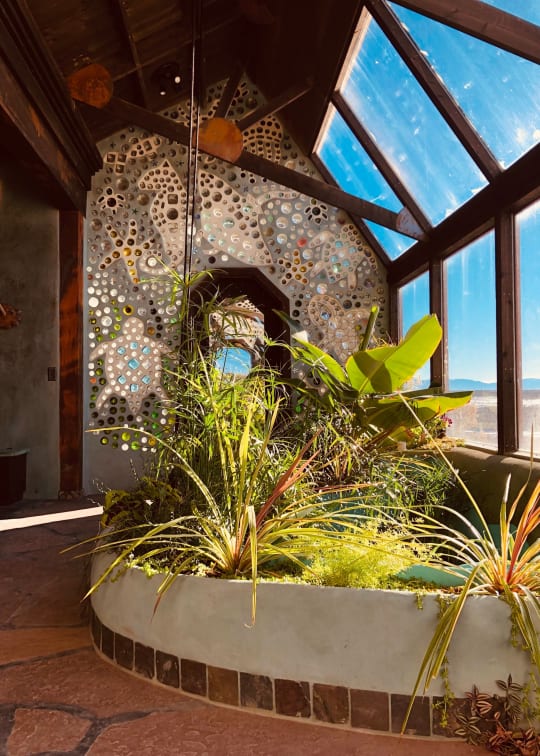Earthship Biotectures Slides
At a glance..
This presentation features an Experimental Subdivision in Taos, New Mexico called the Greater World Earthship Community. It was developed by Michael Reynolds.
The details..
"Earthship Biotectures" by Ann Schmidt is a comprehensive guide to understanding the concept of Earthships. These are unique structures that use natural and recycled materials for construction, making them environmentally friendly. The author delves into this innovative approach to building with an emphasis on sustainability.
The book explains how Earthships are built using rammed earth tires as frames, bottles and cans as fillers, adobe for plastering walls both inside and out, while stone or concrete flooring helps maintain comfortable temperatures through thermal mass construction. Additionally, these structures have excellent water harvesting capabilities which include collecting rainwater/snowfall in cisterns that can be used multiple times after filtration.
One of the most interesting aspects discussed in "Earthship Biotectures" is how these buildings generate their own electricity via prepackaged photovoltaic/wind power systems stored in batteries supplied to electrical outlets. This energy source makes it possible for residents to live off-grid without relying on traditional utility companies.
Overall,"Earthship Biotectures" provides readers with a detailed look at Michael Reynolds' Greater World Earthship Community located in Taos New Mexico where he has been developing his vision over three decades.The community's gravel pit reclamation project demonstrates its commitment towards adapting human needs around existing activities rather than disrupting nature.This book serves as an inspiration not only for architects but also developers who want to build subdivisions based on environmental principles.
